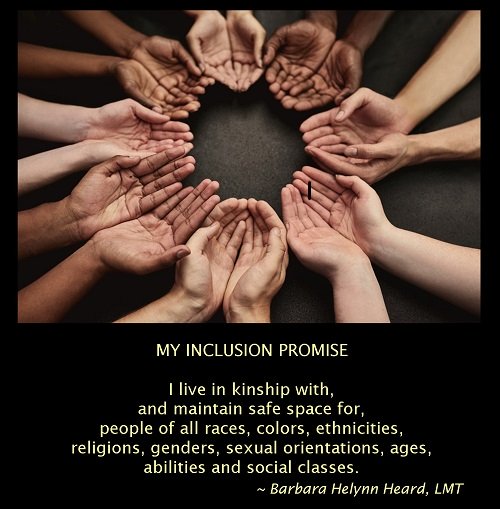love the body!
spirit, nature & prayer in lomilomi
LOKAHI TRIANGLE
Being aware of my relationship with both Spirit and nature makes me feel alive. Feeling fresh air on my face makes me feel alive. Moving makes me feel alive. Dancing makes me feel alive. I feel most alive and particularly connected with Spirit when I am outdoors. When I pray I feel alive and of course when I connect with people via lomilomi I feel alive!
I love the concept of the lokahi triangle, or the harmony triangle. This Hawaiian concept refers to the interdependent relationship between Spirit, nature and humanity. Each is an equally important corner of the lokahi triangle.
Harmony between humanity, nature and Spirit supports not only health and peace for us as individuals but also health and peace for our communities and our global societies. This indigenous model offers a blueprint for living that gives me hope.
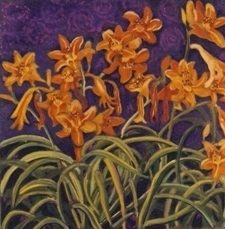
When I remember the lokahi triangle as I give lomilomi massage, I can draw on the healing powers of nature and of God in my work!
THE LILIES
OF THE FIELD
This Bible verse, Mathew 6:28-29 speaks to me.
Consider the
lilies of the
field, how they grow. They neither
toil nor spin, yet I tell you, even Solomon in all his glory was not
clothed like one of these….
Nature is so beautiful!! The trees are so graceful! The flowers are gorgeous! The birds – some lovely in their simplicity and others flamboyantly beautiful! The animals of all colors, shapes and sizes – butterflies, grasshoppers, cats, wolves, patterned snakes, and on and on!!! The sunrises and sunsets, the rivers and lakes and ocean, the mountains: all of them beautiful!! Even fires and storms and volcanoes hold a certain beauty. Our earth is a marvel of beauty!!! Oh how I love to rest my eyes in nature!
KUA
The word and concept of kua are very special! Kua is the Hawaiian word for back, and it includes the word ku – to stand tall. Our spine is our kuamo’o – or literally our gecko back. Makua – literally from the back – means parents. Aumakua – literally the period of time coming from the back – refers to a deified aspect of ancestors which can guide us and is often experienced as being embodied in particular animals or plants. Kuahiwi is the word for a mountain ridge.
I love how kua connects us both with the earth and with our family present and past! And our kuamo’o, or spine, when considered together with the concepts of our several piko, can literally be seen as a time line connecting us with our ancestors and our descendants.
PIKO
Certain spots on our bodies are piko, or energy centers. The
Hawaiian word piko
can be loosely translated as chakra. The piko on the
crown of our heads which is soft when we are born connects us with
Spirit and with those who have come before us. The piko at
our navel connects us with our current generation. This is
the piko
where we were physically connected with our mother through our
umbilical cords. And our genitals represent the piko
connecting us with our descendants. What wondrous bodies we have!!

E piko kakou! is the greeting we use in Hawaiian hale pulo’ulo’u – Hawaiian sweat lodge ceremonies. E piko kakou literally means let us all be piko together, and for me it means let us all be family. We call out E piko kakou each time a person or a stone enters the hale, the structure we use for the ceremony.
Pehea
kou piko? is a traditional Hawaiian greeting used between
friends. While it can be literally translated as how is your belly
button?, it means how
are you and your entire family? I like
this! It feels softer and fuller than the English how are
you?
I love not only individual words in the Hawaiian language, and not only the soft sound of Hawaiian language, but also the values and feelings which live within the words!
CONNECTING NATURE, SPIRIT AND GENERATIONS OF PEOPLE
So with our bones and our piko our bodies contain a living timeline as well as living energy centers connecting us with our ancestors, with our descendants, with Spirit and with nature. I like this idea!! What an honor and responsibility!! What a thing of beauty!! What a good reason to stand tall!!!
‘IKE 'IA NO KA LOEA I KE KUAHU‘Ike 'ia no ka loea i ke kuahu can be translated an expert is known by the altar s/he builds. These inspirational words of wisdom were the theme for the world hula conference I attended in 2005.
The poster for the conference included these words and a photograph showing a hula dancer’s soft, graceful hands adorned with kupe’e – wristlets of woven leaves and placed in front of her body.
I love this image and the associated phrase ‘ike 'ia no ka loea i ke kuahu because it reminds me of the connection between people, nature and God.
I learned at this conference that the kuahu – the altar – has three traditional levels of manifestations for hula dancers. First, the pali, or seaside cliffs are kuahu of the ‘aina, the land. Second, traditional hula schools included a kuahu, somewhat like an altar in a church. The hula kuahu is dedicated to Laka, the Hawaiian deity of hula, and is made of specific plants of the forest each of which represents specific qualities. The hula kuahu is created and maintained with ceremony. And finally, and perhaps most intimately, our bodies are kuahu!
YES! Our bodies are altars! Spirit dwells in our bodies. With this in mind, I commit to caring for my body as a kuahu. I commit to eating healthy food, to cleansing regularly, to grooming myself with care, to adorning myself beautifully, to resting, to exercising, to dancing and to singing, all in love and appreciation for the home of Spirit which my body is.
And I commit to tending to the body level kuahu of those who come to me to receive healing massage and/or instruction in lomilomi.
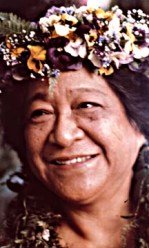
Aunty Margaret Machado, well loved Hawaiian elder and highly influential member of the Mana Lomi® linage is well remembered for saying frequently Love the body!! as she taught lomilomi classes. When we touch with love, healing can happen at a deep level because with love, Spirit is involved.
But love is only one of the two important words in this phrase. Body is the other primary word. Loving and caring for my body, and touching other peoples bodies with love, is one way I bring to life the expression ‘ike i ke loea i ke kuahu!
PRAYER
- IN BODY OR OUT OF BODY?
My dear Aunt Julie, a devout member of the Bahai faith, recently told me that when she prays she leaves her body to commune with God. I was startled. I respect and honor my aunt’s experience with prayer, while I simultaneously respect and honor my different experience. When I pray I am fully in my body, breathing and feeling God in my body.
I often pray while giving lomilomi and for me, prayer physically grounds me in my body. WOW! How wonderful!
Many teachers of various lomilomi modalities emphasize prayer as an important part of our work. And as Christianity was accepted almost universally in Hawaii in the 1800 and 1900’s, many lomilomi teachers use a Christian style of prayer which begins by greeting God, and perhaps also Jesus, and then expresses gratitude and prayer requests. Sometimes I personally use this form of prayer, sometimes not. Many other lomilomi teachers use universal language in wording their prayers.
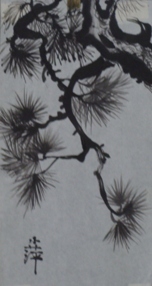
In teaching lomilomi classes I follow the prayer style modeled by Mana Lomi® founder Dr. Maka’ala Yates. I’ll open the prayer with some variation of this greeting: “Spirit of Peace, Spirit of Love, Spirit of Harmony in all people, places and things, thank you...”
Mana Lomi® teachers do our best to make Mana Lomi® available to people of all spiritual faith backgrounds who, while committed to their own faith, are also open and respectful of other faiths. We acknowledge that people of different faiths often have different reference points. Examples of two different spiritual reference points are the time of Christ and the time of Mu, also known as Lemuria.
Pule, the Hawaiian word for prayer, was in use long before Christianity reached Hawaiian shores in the early 1800s, and traditionally referred to chanted verse addressed to the land based deities recognized and honored by early Hawaiians. Today the word pule refers to all forms of prayer.
We use spiritual chants of affirmation in Mana Lomi® classes. Here’s one that I especially enjoy. Repeatedly chanting these inspiring words has helped me to embody their reality in my life.
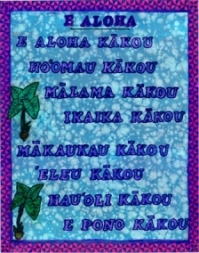
E
ALOHA
DIVINE
LOVE
E aloha
kakou
We are loving
Ho’omau
kakou
We persevere
Malama kakou
We are caring
Ikaika kakou
We are strong
Makaukau
kakou We
are prepared
‘Eleu
kakou
We
are
energetic
Hau’oli
kakou
We are happy
E pono
kakou
We are rightly
aligned.
composed
by Maka'ala Yates
For some people singing in public takes a leap of faith, and singing in a foreign language is really a stretch. Singing in public was a healing experience for me. Perhaps like me some of you had an incident in your youth that left you believing that your singing was junk. Perhaps someone laughed at you or suggested that you mouth the words while others are singing.
I kept my singing mouth shut from the age of about 17 until my mid
40s. For me setting my limiting not good
enough belief aside and embracing the fullness
of my singing
voice opened doors to powerful healing!
Occasionally people prefer not to chant in class because they experience doing so as somehow outside their alignment with “their God”. Simply listening respectfully is always OK in my lomilomi classes for people for whom this is true.
When I chant these Mana Lomi® healing chants, Spirit, nature and prayer flow through my body, mind and soul to meet with the souls of other individuals, of humanity and of the earth, our shared home. As I share Hawaiian healing chants in lomlomi classes, I do so hoping that our singing voices will open and fill the hearts of others as it now fills mine! And truly, it has taken a whole series of special healing miracles to get me where I am today!
Mahalo - thank you - all my dear readers. I send you my love.
Barbara Helynn Robles
Copyrighted 2010 Barbara Helynn Heard
For more information visit www.lomilomi-massage
Email barbaraheard at msn dot com
Olympia, Washington
All materials are copyrighted. If you would like to post
articles on
your website or use it as training material, permission is granted as
long as all contact and credit information remains intact.
Thank you.
